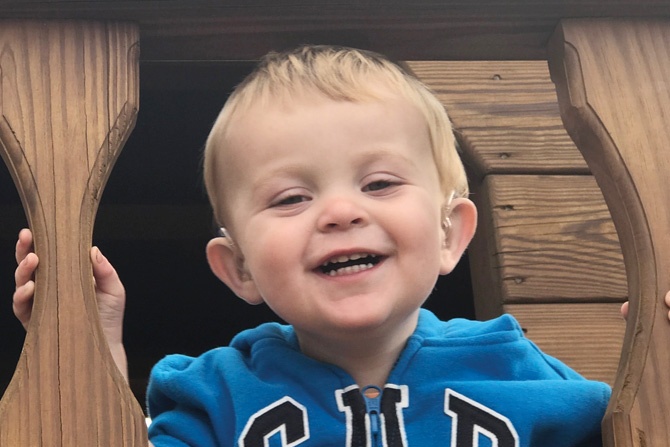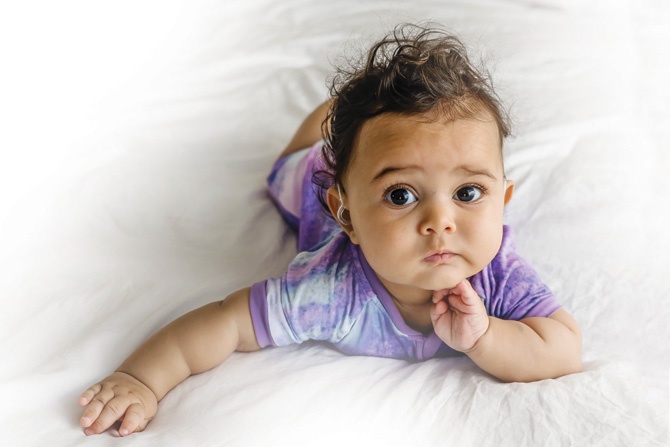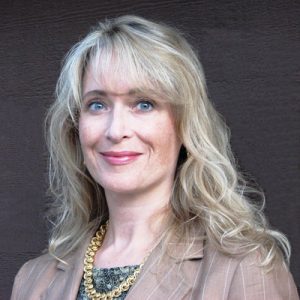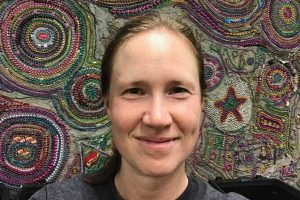The Utah Early Hearing Detection & Intervention (EHDI) milestones are for every newborn to be screened and rescreened if necessary before 14 days of age. Newborns who do not pass their rescreening (usually done as an outpatient at seven to 10 days of age) should:
- Be tested for congenital cytomegalovirus (CMV) infection via PCR testing before 21 days of age utilizing urine or saliva; and
- Have an audiological diagnostic evaluation by an audiologist with expertise in infant testing before three months of age.
For those diagnosed as deaf or hard-of-hearing, it is imperative they be enrolled in early intervention (EI) services before six months of age.
The family physician (FP) plays a key role in ensuring infants in their care meet these milestones in order to give them the best chance of developing early communication and being mainstreamed in kindergarten. The FP is also instrumental in medical home monitoring auditory/speech/language milestones to catch pediatric late-onset hearing loss.
Although almost all newborns are screened for hearing in Utah, most current state data shows only 77% of infants requiring a diagnostic audiological evaluation receive one before three months of age, and only 63% of infants diagnosed as deaf or hard-of-hearing (DHH) enroll in early intervention before six months of age.
How can an FP help the infants in their care achieve these important EHDI milestones?
- If an infant did not pass their newborn hearing screening, be sure the family brings their baby back to the birth hospital for their outpatient rescreening no later than 10 days of age.
- If the infant fails their repeat screening, they should have CMV testing completed before 21 days of age and be referred to an audiologist with expertise in infant testing as soon as possible.
- If an infant is diagnosed with middle ear effusion and does not pass their diagnostic auditory brainstem response (ABR) evaluation because of it, be sure the infant returns to the audiologist for a repeat evaluation after any middle ear treatment, even if they are in the care of an ENT. Many infants fall through the cracks when middle ear effusion is involved, as the ENT often tells the family that the infant “is fine” after the fluid resolves. Further, the ENT does not stress the importance of completing audiological follow-up to ensure the infant has normal cochlear function.
- For those infants diagnosed as DHH, check to be sure the audiologist referred them to early intervention. The specialized provider of Part C EI services is the Utah School for the Deaf and Blind Parent Infant Program, otherwise known as PIP. Family enrollment is low for these services in Utah; please encourage the family to take advantage of these very important FREE services. Infant hearing loss should be treated like the neurodevelopmental emergency it is, and the sooner intervention is initiated, the better the child’s developmental outcomes.

The Utah Department of Health’s Children’s Hearing Aid Program (CHAP) provides hearing aids to financially eligible children under six years of age who do not have insurance coverage for amplification. For more information, go to health.utah.gov/chap.
Utah diagnoses two infants per thousand newborns with hearing loss every year, but not all children can be identified through newborn hearing screening. Three times the number of children at birth are diagnosed with hearing loss by the time they enter school (http://www.jcih.org/posstatemts.htm). For many of these children, their parents and physicians do not know they are at risk for late-onset hearing loss. For this reason, there is growing recognition of the importance of early childhood hearing screening.
How can an FP help in the identification of these children?
- Monitor speech/language and hearing/auditory milestones at every well-child visit.
- If a parent/daycare/preschool voices concern about a child’s hearing, take it seriously and refer to a pediatric audiologist right away. “Wait and see” is not an acceptable strategy.
- Realize sometimes a little one’s behavioral issues can be a sign of hearing loss. See #2 above.
- Late-Onset Hearing Loss Week will occur annually from May 4 through May 10. Resources for you and your families can be found on the Olive Osmond Hearing Fund website: https://www.hearingfund.org/lohl-awareness.
Lastly, the Utah Department of Health’s Children’s Hearing Aid Program (CHAP) provides hearing aids to financially eligible children under six years of age who do not have insurance coverage for amplification. For more information, go to health.utah.gov/chap.
The Utah EHDI program is here to help. Please do not hesitate to call (801) 273-6600 or email ehdi@utah.gov for guidance and/or resources.
Stephanie Browning McVicar, AuD, CCC-A is the EHDI Programs Manager with the Utah Department of Health.










